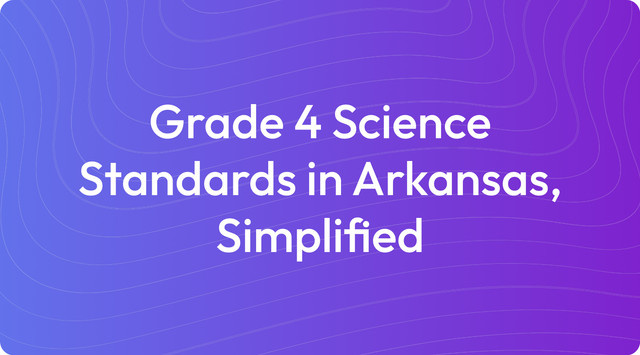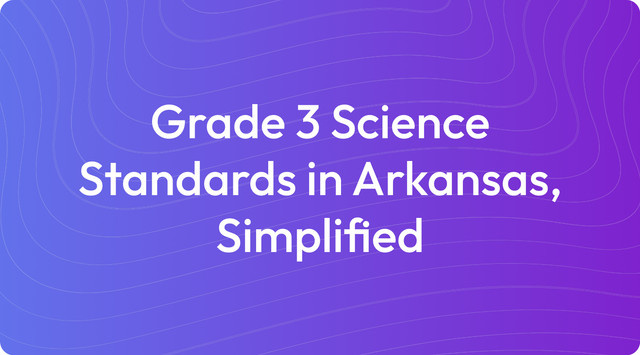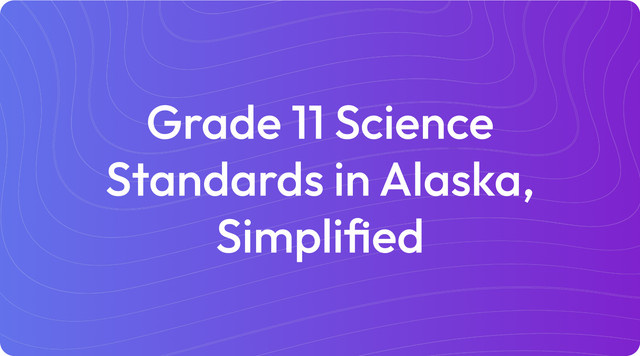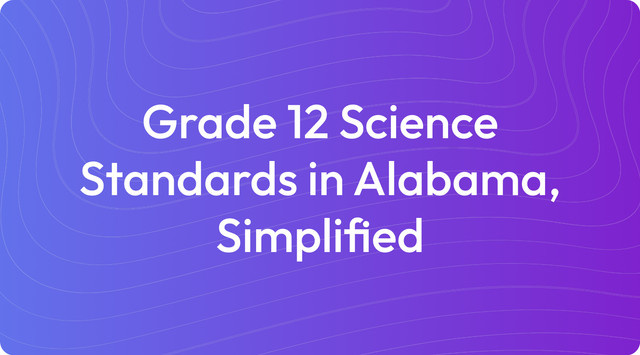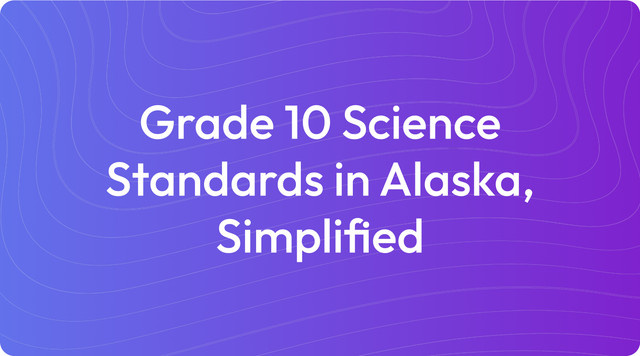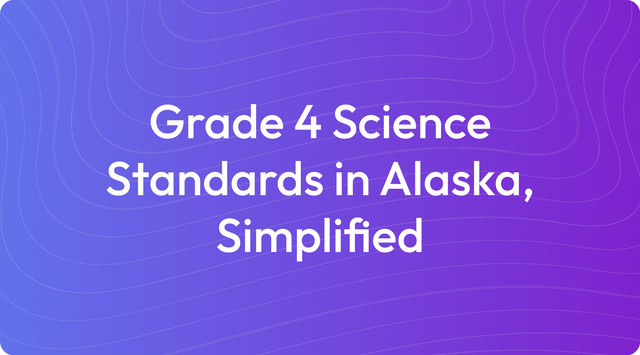Grade 7 Science Standards in Alabama, Simplified
Grade 7 science explores life sciences, cells, genetics, and ecosystems in Alabama. Learn key points—read more on TeachShare!
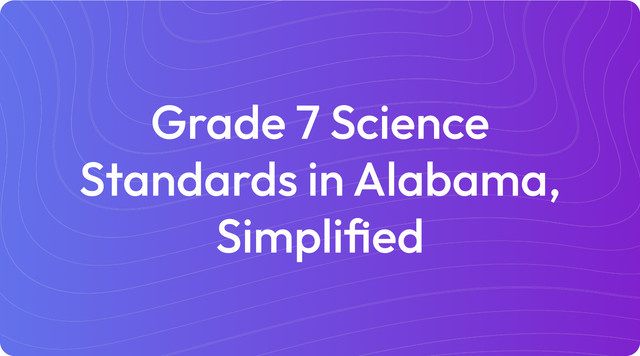
We understand that working with education standards is a core part of your planning process. These frameworks guide instruction and set benchmarks for student achievement. Our aim is to offer resources that help you interpret and apply these standards effectively in your classroom.
Education standards are learning goals that define what students are expected to learn at each grade level. For teachers, they provide clear and consistent objectives without prescribing how you should teach. For instance, the Grade 7 Science Standards in Alabama require students to develop models of cells, giving you the professional freedom to design the specific activity that best suits your students.
What Are Grade 7 Science Standards in Alabama?
The Grade 7 Science Standards for Alabama, based on the state's Course of Study, center on Life Science and Engineering Design. They are designed to encourage scientific inquiry and hands-on learning, helping students connect concepts to real-world applications. The standards are organized into the following key areas:
Key Areas of Grade 7 Science Standards in Alabama
1. Life Science (LS): Cells, Organisms, and Ecosystems
- Develop and use models to describe the structure and function of cells and their organelles.
- Gather and synthesize information to explain that cells form tissues, tissues form organs, and organs form systems.
- Analyze and interpret data to provide evidence for the levels of organization in multicellular organisms.
2. Ecosystem Dynamics and Interactions
- Develop models to describe the flow of energy and matter in ecosystems, including photosynthesis and cellular respiration.
- Analyze and interpret data to demonstrate how changes to physical or biological components of an ecosystem affect populations.
- Design and evaluate solutions for minimizing human impact on ecosystems and biodiversity.
3. Heredity and Genetics
- Use models to describe how genetic information is passed from parents to offspring through sexual and asexual reproduction.
- Gather and analyze data to explain the role of DNA in determining traits in organisms.
4. Evolution and Natural Selection
- Construct explanations based on evidence for how natural selection leads to adaptations in populations over time.
- Analyze data to explain patterns in the fossil record and how it provides evidence of evolutionary relationships.
5. Engineering, Technology, and Applications of Science (ETS): Problem-Solving
- Apply scientific principles to design methods for monitoring or minimizing human impact on the environment.
Key Learning Goals for Grade 7 Science in Alabama
- Students will model and explain biological processes like photosynthesis, cellular respiration, and genetic inheritance.
- Students will analyze data to study ecosystems, heredity, and evolutionary patterns.
- Students will use problem-solving skills to design solutions that address human impact on ecosystems and biodiversity.
The framework for these standards is guided by the Alabama Course of Study and draws from national topic arrangements like the Next Generation Science Standards.
Key Tested Standards
In Alabama, the key tested standards for 7th-grade science are based on the Alabama Course of Study: Science (2015). These standards focus on critical concepts in Life Science and Engineering Design. They assess your students' understanding of core topics like cells, ecosystems, and heredity, as well as their ability to apply scientific principles to solve problems.
Key Tested Standards for Grade 7 Science in Alabama
The assessment focuses on the following units and standards:
1. Life Science (Cells and Organisms)
- Standard 1: Develop and use models to describe the structure and function of cells and their organelles.
Why It’s Key: This standard builds foundational knowledge about the role of cells, their organelles, and how they contribute to the life functions of organisms. - Standard 2: Gather and synthesize information to explain that cells form tissues, tissues form organs, and organs form systems.
Why It’s Key: Students explore the organization of life and how body systems work together to maintain homeostasis. - Standard 3: Analyze and interpret data to provide evidence for the levels of organization in multicellular organisms.
Why It’s Key: Students investigate how specialized cells work together to perform specific functions in organisms.
2. Ecosystem Dynamics and Energy Flow
- Standard 4: Develop models to describe the flow of energy and matter in ecosystems, including photosynthesis and cellular respiration.
Why It’s Key: This standard introduces students to processes that sustain life, like energy transfer and matter cycling in ecosystems. - Standard 5: Analyze and interpret data to demonstrate how changes to physical or biological components of an ecosystem affect populations.
Why It’s Key: Students learn how ecosystem balance is affected by natural and human-induced changes. - Standard 6: Design and evaluate solutions for minimizing human impact on ecosystems and biodiversity.
Why It’s Key: Students apply scientific principles to solve real-world environmental challenges, such as pollution or habitat destruction.
3. Heredity and Genetics
- Standard 7: Use models to describe how genetic information is passed from parents to offspring through sexual and asexual reproduction.
Why It’s Key: Students explore heredity and how traits are inherited, providing a foundation for understanding genetics. - Standard 8: Gather and analyze data to explain the role of DNA in determining traits in organisms.
Why It’s Key: This standard introduces the molecular basis of genetics, helping students understand how DNA codes for proteins that determine traits.
4. Evolution and Natural Selection
- Standard 9: Construct explanations based on evidence for how natural selection leads to adaptations in populations over time.
Why It’s Key: Students learn how populations evolve through environmental pressures and genetic variation. - Standard 10: Analyze data to explain patterns in the fossil record and how it provides evidence of evolutionary relationships.
Why It’s Key: Students examine how fossils reveal the history of life on Earth and evolutionary connections between species.
5. Engineering, Technology, and Applications of Science (ETS): Problem-Solving
- Standard 11: Apply scientific principles to design methods for monitoring or minimizing human impact on the environment.
Why It’s Key: Students develop solutions to real-world problems, like reducing pollution or protecting biodiversity, fostering environmental responsibility.
Why These Standards Are Key for Testing
These standards are prioritized because they assess students’ ability to:
- Analyze Data: For example, interpreting data on ecosystem changes, genetic inheritance, or fossil records
- Develop and Use Models: For example, creating models of cells, energy flow, or genetic traits
- Construct Explanations: Using evidence to explain how natural selection or cellular functions work
- Solve Real-World Problems: Designing solutions to reduce human impact on ecosystems or biodiversity
This information is based on the official guidelines provided by the Alabama State Department of Education and the topic arrangements from the Next Generation Science Standards.
Example Learning Objectives for Unit Planning
Learning objectives are clear, specific statements that describe what you want your students to know or be able to do by the end of a lesson. They break down broader state standards into actionable, measurable goals for your daily instruction. To help with your unit planning, here are examples of learning objectives for two Grade 7 Science standards in Alabama, written in student-friendly language to align with the Alabama Course of Study: Science (2015):
Standard: Develop and use models to describe the structure and function of cells and their organelles (Standard 1).
Learning Objectives:
- I can identify the parts of a cell, such as the nucleus, mitochondria, and chloroplasts, and explain their functions.
- I can compare and contrast plant cells and animal cells by their structures.
- I can create a model of a cell and label each organelle and its job.
- I can explain how cells work together to keep plants and animals alive.
Standard: Construct explanations based on evidence for how natural selection leads to adaptations in populations over time (Standard 9).
Learning Objectives:
- I can explain how certain traits help organisms survive in their environment.
- I can describe how natural selection causes populations to change over time.
- I can use examples, like the peppered moth or finches, to explain how adaptations occur.
- I can gather evidence (like data or observations) to support how traits are passed down and help organisms survive.
Key Changes & Updates
The Grade 7 Science Standards in Alabama, based on the Alabama Course of Study: Science (2015), have been updated to make science education more hands-on and relevant for students. The changes emphasize critical thinking and problem-solving by integrating Life Science with Engineering Design. This shift encourages students to move beyond memorization and actively apply scientific concepts to real-world scenarios.
Key updates include a greater focus on systems thinking, where students explore how biological systems are interconnected, from cells to entire ecosystems. You will also find an increased emphasis on scientific inquiry and data analysis, requiring students to construct explanations from evidence. Furthermore, the standards now embed engineering design principles, asking students to create solutions for environmental challenges, which helps build practical problem-solving skills and connects science to tangible applications.
Create with TeachShare
We know that aligning your lessons with these detailed standards takes time and effort. Our platform is designed to help you build high-quality, standards-aligned resources quickly, so you can focus more on teaching and less on prep work. Start creating standards-aligned instructional resources with TeachShare now.
Frequently Asked Questions
1. What are the main topics for Grade 7 Science in Alabama?
Grade 7 science centers on Life Science and Engineering Design. Here are the key areas of focus:
- Cells and Organisms: The structure and function of cells, and how they organize into tissues, organs, and systems.
- Ecosystem Dynamics: How energy moves through ecosystems and the impact of human activity on biodiversity.
- Heredity and Genetics: The basics of how genetic information is passed down and how DNA determines traits.
- Evolution and Natural Selection: Understanding how species adapt over time, supported by evidence like the fossil record.
- Engineering Design: Applying scientific principles to design solutions that lessen human impact on the environment.
2. What is different about the 2015 Alabama Course of Study for Science?
The updated standards shift the focus toward more active and applied learning. Here’s what that looks like in the classroom:
- Hands-On Learning: Students are encouraged to learn by doing, through experiments, building models, and collecting data.
- Real-World Applications: Lessons are connected to current issues such as biodiversity loss and climate change.
- Engineering Integration: Students get to design, test, and improve solutions for real problems.
- Critical Thinking: There is a greater emphasis on analyzing data and constructing arguments based on evidence.
3. What are some examples of activities that align with the standards?
You can bring these standards to life with a variety of engaging projects. Here are a few ideas:
- Cell Biology: Have students create 3D models of plant or animal cells to explain the function of each organelle.
- Genetics: Use Punnett squares to help students predict the probability of offspring inheriting specific traits.
- Natural Selection: Explore a case study like the peppered moth to show how environmental changes drive adaptation.
- Human Impact: Challenge students to design a solution to a local problem, like improving your school’s recycling program.
4. How do these standards connect to real-world applications?
These standards help students understand the science behind major real-world challenges and concepts. They equip students to grasp:
- How their own bodies work, down to the cellular level.
- Why biodiversity is critical for healthy ecosystems.
- The consequences of human activities like pollution and habitat destruction.
- How species evolve and adapt to survive in changing environments.
5. How can you make Grade 7 Science more engaging for students?
Keeping students engaged is key. Here are some practical strategies you can use:
- Use real-world phenomena to spark curiosity, like asking, "How can we reduce pollution in our town?"
- Incorporate hands-on activities that allow students to build, experiment, and explore concepts directly.
- Encourage collaborative problem-solving by having students work in groups to design solutions for issues like protecting endangered species.
- Use technology like virtual labs, simulations, and interactive videos to visualize complex topics like DNA.
Answer


